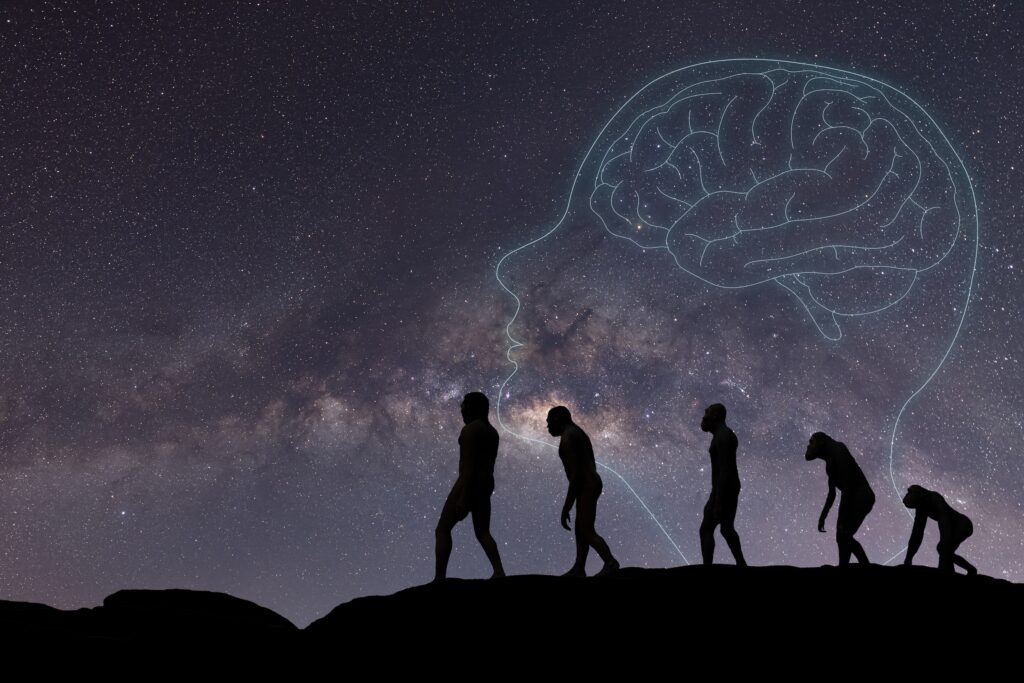Kabbalistic panpsychism
Reading | Philosophy
![]() Prof. Hyman M. Schipper, MD, PhD, FRCPC | 2021-01-08
Prof. Hyman M. Schipper, MD, PhD, FRCPC | 2021-01-08

In this powerful essay, Prof. Schipper unveils the uncanny similarities and correspondences between the ancient Kabbalah and cutting-edge theories of reality such as idealist cosmopsychism.
From a scientific and philosophical point of view, there is arguably no phenomenon as fiendishly intractable as the origin and nature of consciousness. Consciousness and associated notions of qualia, top-down causation, free will, etc., have been largely neglected by the (reductionist) scientific community for many decades as illusions or epiphenomena, ‘side effects’ of brain physiology and neurochemistry with no impact on the material world. Spurred on in large measure by recent interpretations of quantum physics, such as the purported role of the ‘observer’ in the unfolding of reality, consciousness is now at the forefront of philosophical and neuroscientific inquiry.
For reasons of religion, demographics, language and politics, until the period known as the Haskalah (Jewish Emancipation; ca. 1770-1880) the popular world and Jewish literatures were largely self-contained and non-intersecting. The last hundred years have witnessed a burgeoning of knowledge conflating aspects of mainstream science and philosophy with the Jewish mystical tradition or Kabbalah. For example, I and others have demonstrated robust conceptual parallels between specific Kabbalistic constructs and both Heisenberg’s Uncertainty Principle1 and the physics of David Bohm.2 In those papers, we argued that contemporary science and ancient mysticism display unprecedented degrees of confluence because both paradigms—one grounded in empirical research, the other revelation-based—may provide legitimate and complementary insights into the nature of reality.
Notwithstanding the radically different lexicons naturally invoked by the various disciplines, there have come to light concordant perspectives on consciousness between the Kabbalah and modern formulations of quantum/Bohmian mechanics, idealism and process philosophy. Moreover, the writings of leading Kabbalistic and Chassidic authorities, buttressed by Scripture, the Talmud and other mainstream Jewish sources, support an ontology of consciousness that is panpsychist in nature and informed by the tenets of panentheism (belief in a Deity that both transcends and is immanent within the physical universe). According to the Kabbalah, the mental pole of reality transcends and pervades, in fractal fashion, the entirety of Creation while remaining absolutely unified at its source. The Kabbalah understands consciousness to be holographically and hierarchically organized, relativistic, and capable of downward causation. Metaphysical constructs unique to humankind (in the spirit of imago Dei) augment intrinsic neural consciousness manifesting as self-awareness, enhanced intuition and subjective moral autonomy. In my forthcoming book entitled Kabbalistic Panpsychism: The Enigma of Consciousness in Jewish Mystical Thought (John Hunt Publishing), evidence supporting the latter is adduced from wide-ranging sources; implications of Kabbalistic panpsychism for female intuition, causation, neural organization, clinical states of awareness, free will, ethics, prophecy and cosmic evolution are explored; and the epistemological value of such exercises is considered.
Kabbalistic panpsychism may go further than many other traditions, scientific or otherwise, to capture the physical, psychological and spiritual dimensions of the human condition in a highly integrated and comprehensive manner. A number of salient contributions of the Kabbalah to the understanding of human and other consciousness may be distilled as follows:
1. At the heart of Kabbalistic doctrine is the notion that (i) all created things and events ultimately comprise ten spiritual ‘forces’, ‘attributes’ or ‘information packets’ referred to in Hebrew as Sefirot (sing., Sefirah) and (ii) the top three Sefirot of each thing or event are the latter’s ‘consciousness’. This holds true for all objects whether they belong to the inanimate, plant, animal or human domains, although the nature of the inhering consciousness is understood to differ radically among these categories. Thus, in inanimate objects consciousness informs form and substance (existence); in plant life it informs growth and reproduction; in animals, sentience; and in humankind, self-awareness, rationality and morality.
2. As a panpsychist discipline promulgating the ubiquity of proto-conscious Sefirot in every facet and at all scales of Creation, the Kabbalah effectively does away with Chalmers’ famous ‘Hard Problem’ of consciousness—how subjective experience (qualia) emerges from brain neurochemistry and electrophysiology.
3. A major criticism leveled against general panpsychism is the so-called ‘Combinational Problem’—how mediators of simple consciousness characteristic of ‘lesser’ creatures synergize within ‘higher’ organisms to yield more complex psychic phenomena. In common with aspects of idealism and cosmopsychism, the Kabbalah neutralizes this challenge by emphasizing the existence of a Universal Mind—specifically the Mind of God—which in a top-down, panentheistic manner progressively reveals itself within the Creation hierarchy.
4. Kabbalistic panpsychism is relativistic: When a mineral is incorporated within plant matter, the three top Sefirot of the mineral, which are associated with consciousness, are compactified within the seven lower (‘bodily’) Sefirot of, say, a tree. The tree, in turn, completes its own 10-fold Sefirotic structure by expression or revelation of three consciousness-conferring Sefirot endowing novel properties of growth and reproduction, which were latent within the mineral. In 1990, Bohm expressed a strikingly parallel conviction that “each mental side (of every physical-mental dipole) becomes a physical side as we move in the direction of greater subtlety.”3 An identical dynamic holds when ascending from vegetable to animal life: The entire 10-fold Sefirotic (three conscious, seven bodily) span of the plant is compressed as the seven bottom Sefirot of the animal while the latter exhibits or reveals a new set of three top-Sefirot mediating unprecedented animal consciousness. The capacities for growth and reproduction empowered by the conscious Sefirot of the plant persist within the animal kingdom (which also manifests growth and reproduction) but are subsumed within compactified bodily Sefirot, which are unconscious. The three newly-revealed ‘mindful’ Sefirot confer sentience, emotion and other neurological/behavioral features to the animal not observed in plants. Upgrading from animals to humans, the ten Sefirot of the former are compressed as unconscious bodily Sefirot endowing humankind with a broad spectrum of physiological and psychological functions necessary for our survival. Completing the 10-fold Sefirotic system in humankind is a triad of newly-revealed top-Sefirot conferring attributes of language, reason, self-consciousness, morality, free will and creativity unique to our species.
5. Mainstream neuroscience construes consciousness as a ‘secretion’ and prisoner of the brain. The Kabbalah disagrees and intimates that trans-corporeal (non-local) properties of human consciousness, mediated by specific constructs within the Kabbalistic hierarchy and mirroring or ‘entangled’ with transcendent aspects of Divinity, may account for extrasensory perception, prophecy, the near-death experience and other ‘paranormal’ phenomena documented in virtually every culture.
6. For millennia the Kabbalah has endorsed the intriguing, albeit counterintuitive, notion of ontic (as opposed to epistemic) paradox—paradox that is intrinsic to the Creation and not contingent on limitations of human knowledge. This position was anathema to the business of scientific inquiry until the early twentieth century, when physicists were compelled to reappraise their grasp on reality after embracing the wave–particle duality of light. In its description of a construct known as the RADLA (Hebrew acronym for ‘Unknowable Head’) and two complementary modes of awareness (referred to as Orech and Oivi), the Kabbalah paints a picture of human consciousness which paradoxically permits a profound sense of free choice and the exercise of morality in a universe pre-ordained by God. The metaphysic undergirding the latter envisions the RADLA to be functioning as a Markov blanket4,5—a mathematical object which, in the current context, constitutes a barrier or membrane that seals off human awareness from its embedding matrix, the transcendent Mind of God.
7. Based on a Talmudic analysis of the simulated ‘life form’ known as the Golem, the Kabbalah might predict that artificial intelligence, irrespective of its level of complexity or sophistication, will never achieve the status of human consciousness and therefore will not require protection by legislation equivalent to human rights. On the other hand, the Torah does ascribe to the Golem animal-like sentience and, by extension, it is conceivable that future robotics may be similarly endowed with animal-level consciousness. Should this prove to be the case, Jewish law (Halachah) currently in place to minimize animal suffering may be applicable to advanced AI.
8. Kabbalistic predictions regarding a future epistemology of consciousness is decidedly optimistic. In so far as Heisenberg’s Uncertainty Principle of quantum mechanics and the Kabbalistic RADLA are conceptually equivalent (a position we vigorously defended in earlier publications1), and extrapolating from the fact that the Kabbalah recognizes named entities ‘beyond’ the RADLA, it is conceivable that science may eventually discover the means to probe the fundamentals of Creation at ‘resolutions’ currently prohibited by the Uncertainty Principle. In so doing, the Kabbalah anticipates that a missing fifth epistemic pillar of reality—the Keter-Malchut axis denoting the ingredient of Kedushah (Holiness) and linked to conscience and morality—will combine with the four dimensions of space-time to complete a Theory of Everything. The Kabbalah specifically alludes to the advent of a Seventh (Messianic) Millennium as a phase transition (i) when revelations will render tractable an appreciation of consciousness as a fundamental force of nature and (ii) inaugurating humankind’s ultimate journey towards an enlightened state of cosmic consciousness.
It is important to note that nowhere in this essay did I make claims to the testability or veracity of the Kabbalistic notions expounded. In so far as the latter ultimately rest on matters of faith—such as belief in the existence of an omniscient Deity—after all applications of the intellect are exhausted, efforts to ‘validate’ the positions elaborated here are unlikely to succeed using scientific or other objective methodologies. But is scientific ratification the only hallmark of truth? Many leading scientists, Albert Einstein among them, were confident about the correctness of their theories a priori, not for any definitive experimental proof (for there was often precious little of that initially) but because they held them to be majestic or beautiful!6 Others deny such linkage or view it as potentially counter-productive. For example, Stony Brook biologist Douglas Futuyma cautioned that recent efforts invoking epigenetic modifications (the so-called Extended Evolutionary Synthesis) as a mitigating force against the role of genetic hard-wiring in human evolution may be motivated more by the theory’s emotional or esthetic appeal—people ‘preferring’ not to be enslaved to their genomes—than by any commitment to scientific objectivity.7
On which side of this dialectic does Judaism weigh in? That truth is somehow predicated on beauty is supported by the prophet Micah’s proclamation, “Grant truth to Jacob.”8 But why specifically Jacob? Why not Abraham or Isaac? The Kabbalah associates the Patriarchs Abraham, Isaac and Jacob, respectively, with the Sefirot Chesed (Lovingkindness), Gevurah (Strength) and Tiferet (Beauty). “Granting truth to Jacob” thereby sets up an ‘equation’ directly linking truth with beauty (Tiferet). Kabbalistic panpsychism displays a broad explanatory reach, high internal consistency, elegant parsimony and remarkable convergence with ideas at the cutting edges of science and philosophy. As such, it is my deep conviction that, notwithstanding its inaccessibility to scientific scrutiny, Kabbalistic panpsychism is ripe for further investigation into the elusive nature of consciousness.
Before dyed-in-the-wool materialists balk at this suggestion, they should remind themselves how utterly opaque the consciousness phenomenon is to current reductionist thinking and how equally refractory are a number of popular scientific formulations of reality—such as the Multiverse9 and Superstring theories10—to any modicum of formal verification. Indeed, if the sine qua non of the scientific method is a theory’s potential falsifiability11, one may question whether concepts such as the Multiverse qualify as science altogether! Kabbalistic and other revelation-based reflections on the nature of reality are, of course, also non-falsifiable. But theological truths need not meet criteria for falsifiability given that they make no claims to having been derived scientifically.
My main motivation for writing this essay was to fire the imagination of a readership thirsting for an intellectually satisfying framework in which the marvels of modern scientific discovery may be integrated with the immediacy of subjective experience, the primacy of spirit and the efficacy of consciousness. I believe that the timing of this effort is propitious inasmuch as (i) interest in the study of consciousness has spiked over the last decade or so, (ii) there are signs of spreading disillusionment with the materialist model of reality, in large part fueled by the non-locality implications of contemporary quantum mechanics and (iii) humanity may, in light of the above considerations, be at the cusp of a more unified worldview that favors the meaningful amalgamation of our immense storehouse of scientific knowledge with the vastness of subjective experience. Authentic Kabbalistic doctrine—expounded in the context of contemporary science and philosophy—may provide just such a framework.
To the extent that panpsychism, quantum/Bohmian mechanics, process philosophy and the Kabbalah share common ground in their understanding of consciousness, ongoing discourse among proponents of these diverse disciplines could prove mutually reinforcing moving forward. The extraordinary advances in quantum physics, cosmology and neuroscience we are witnessing today may arm ancient mystical traditions such as the Kabbalah with powerful analogies and vocabulary to open the fountainhead of the latter’s (hitherto arcane) wisdom to modern audiences. As a quid pro quo, the splendidly imaginative Kabbalistic tradition may demarcate novel and potentially disruptive avenues of scientific inquiry and enlighten the enterprise of consciousness study.
References
- Schipper HM, Afilalo R. 2018. Did the Kabbalah anticipate Heisenberg’s uncertainty principle? p. 344-353. In Amoroso RL, Kauffman LH, Rowlands P, Albertini G (ed.), Unified Field Mechanics II: Preliminary Formulations and Empirical Tests. World Scientific, London.
- Schipper HM. 2018. Kabbalah and the physics of David Bohm, p. 354-368. In Amoroso RL, Kauffman LH, Rowlands P, Albertini G (ed.), Unified Field Mechanics II: Preliminary Formulations and Empirical Tests. World Scientific, London.
- Bohm D. 1990. A new theory of the relationship of mind and matter. Philosophical Psychology 3:271-286.
- Kastrup B. 2017. Making sense of the mental universe. Philosophy and Cosmology 19:33-49.
- Kirchhoff M, Parr T, Palacios E, Friston K, Kiverstein J. 2018. The Markov blankets of life: autonomy, active inference and the free energy principle. Journal of the Royal Society, Interface 15.
- Weinberg S. 1992. Beautiful Theories, p. 81-107, Dreams of a Final Theory. Pantheon Books, New York.
- Parker T. 2016. Scientists Seek to Update Evolution, Quanta Magazine.
- Micah 7:20.
- Everett H. 1957. Relative state formulation of quantum mechanics, p. 454-462, Rev. Mod. Phys.
- Greene B. 2010. The Elegant Universe: Superstrings Hidden Dimensions And The Quest For The Ultimate Theory. WW Norton, New York.
- Thornton S. Karl Popper. In Zalta EN (ed.), The Stanford Encyclopedia of Philosophy (Fall 2018 Edition).

Essentia Foundation communicates, in an accessible but rigorous manner, the latest results in science and philosophy that point to the mental nature of reality. We are committed to strict, academic-level curation of the material we publish.
Recently published
Reading
Essays
Seeing
Videos
Let us build the future of our culture together
Essentia Foundation is a registered non-profit committed to making its content as accessible as possible. Therefore, we depend on contributions from people like you to continue to do our work. There are many ways to contribute.















